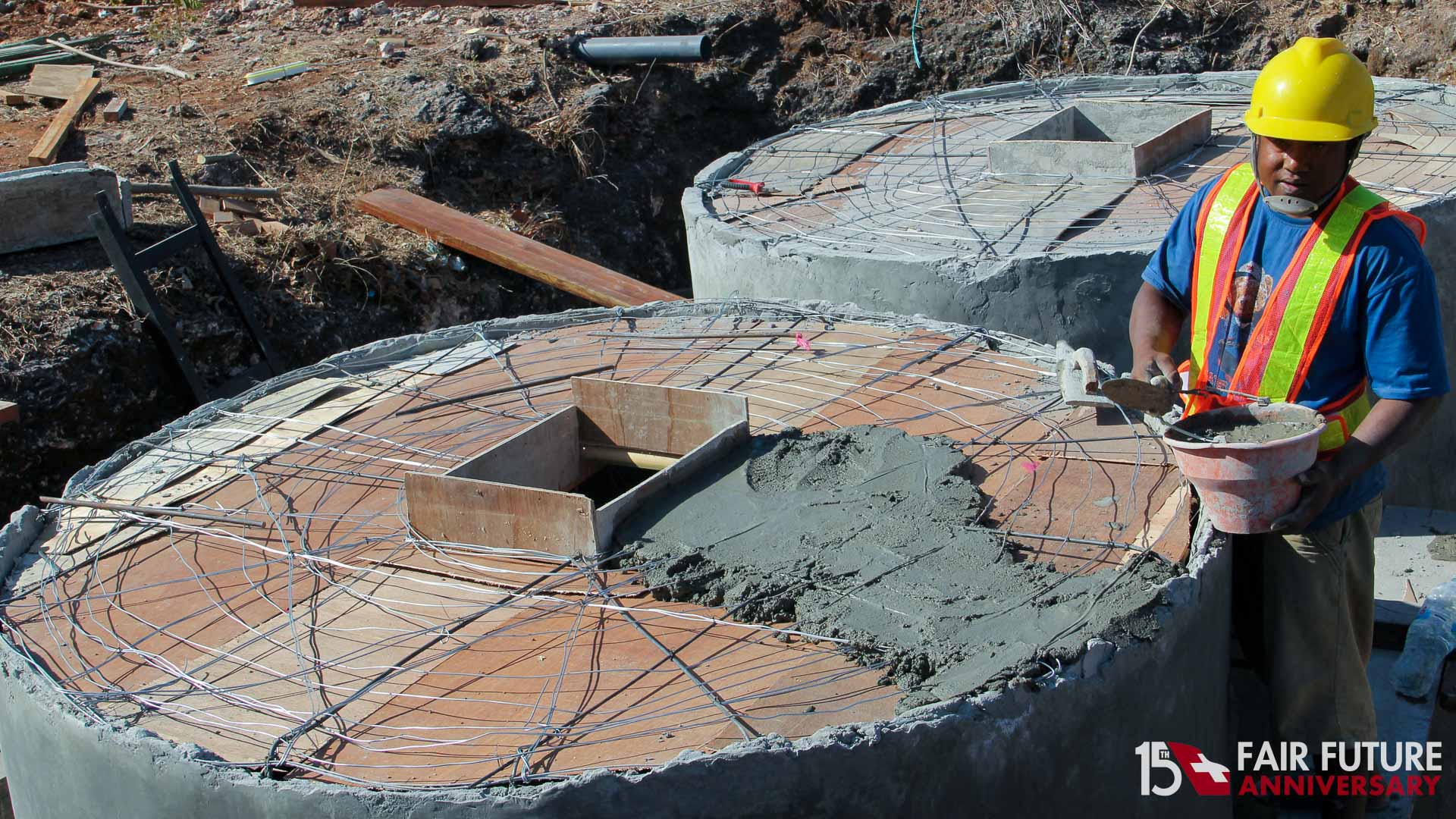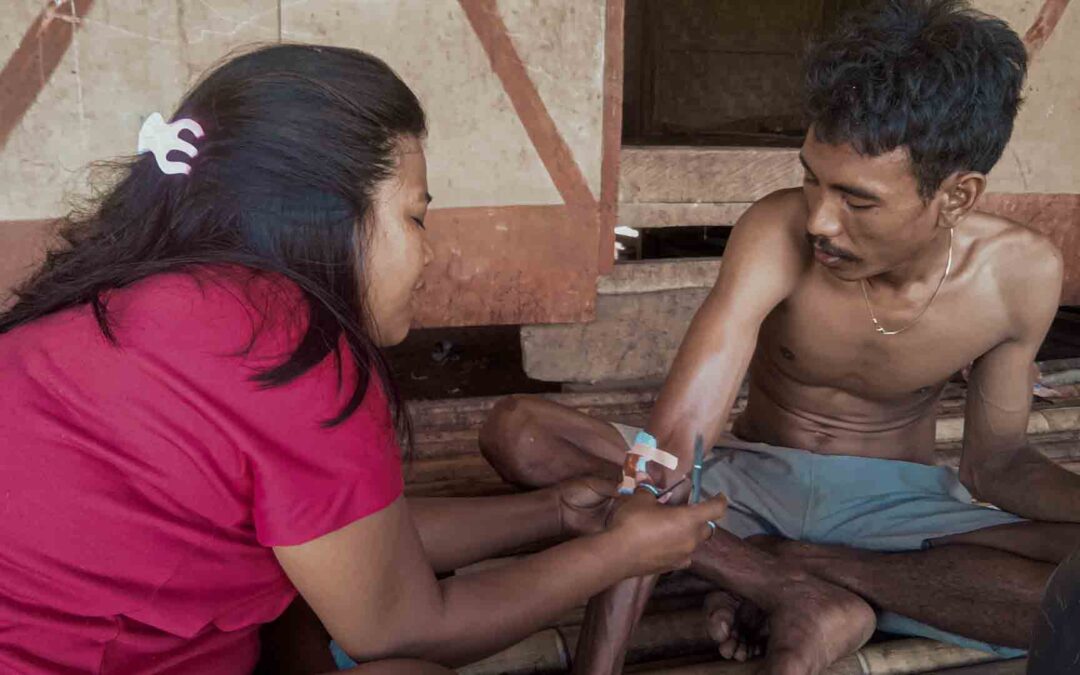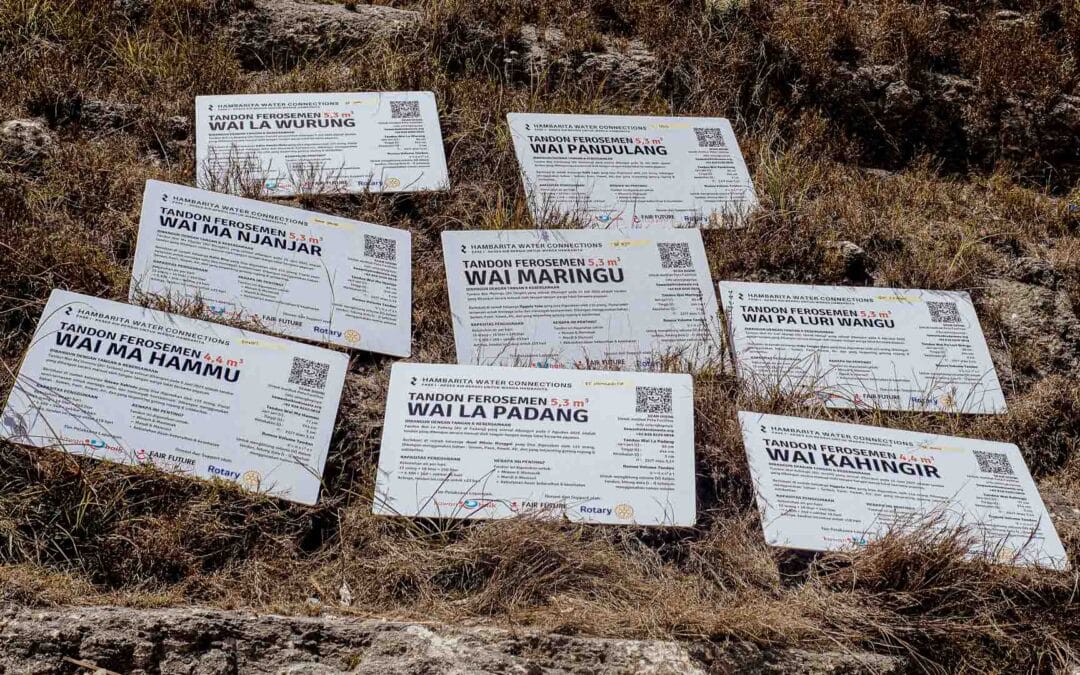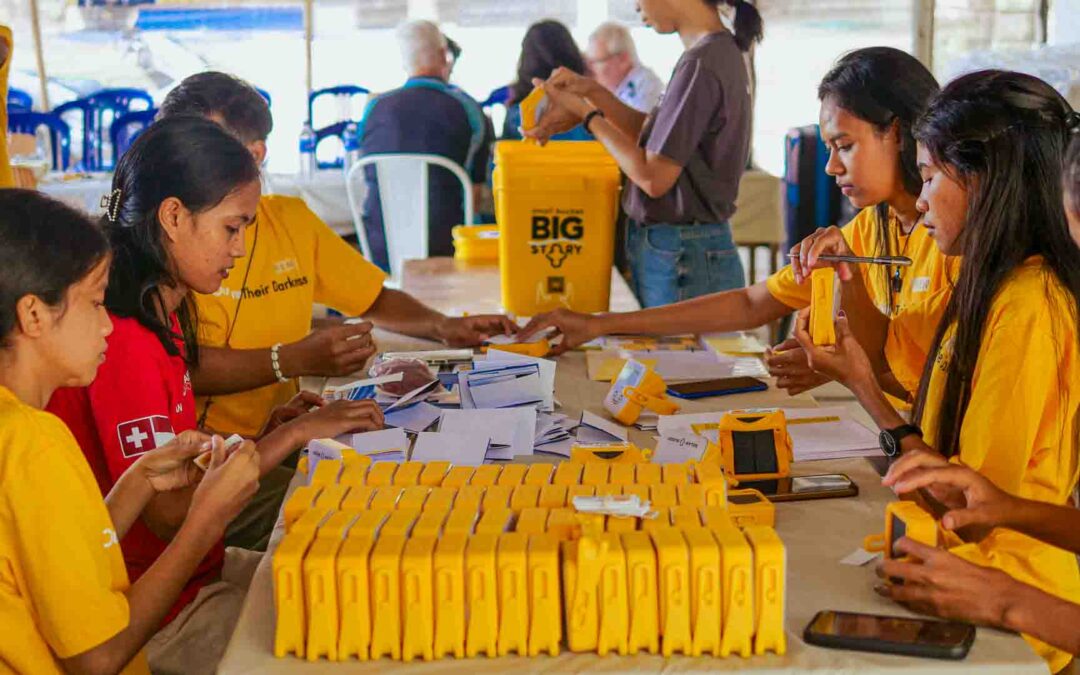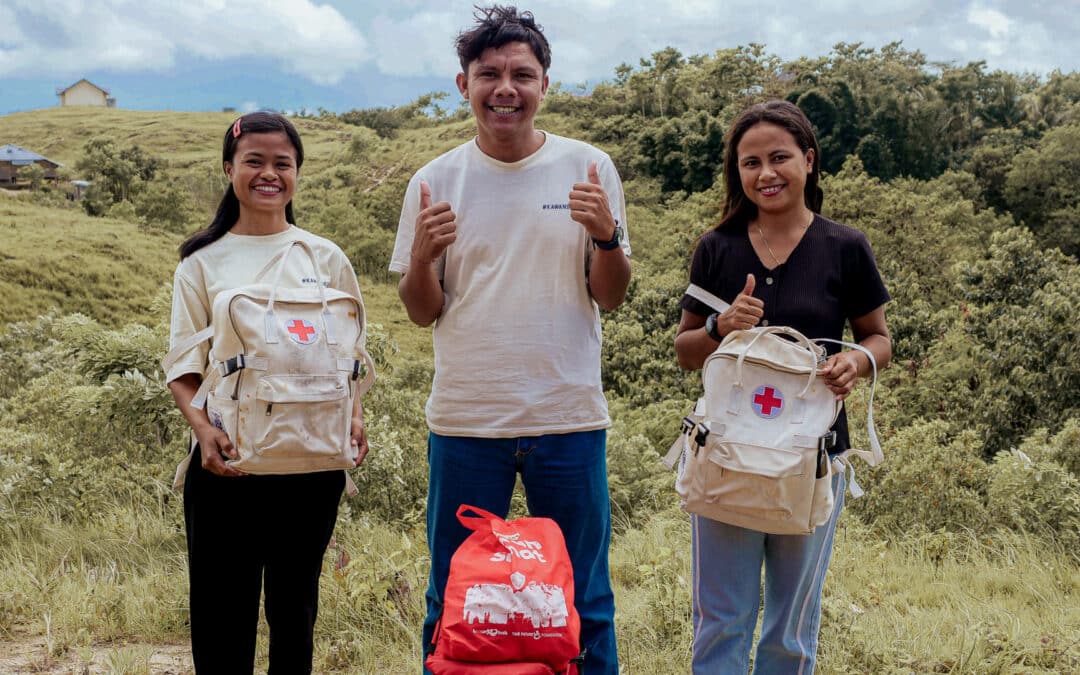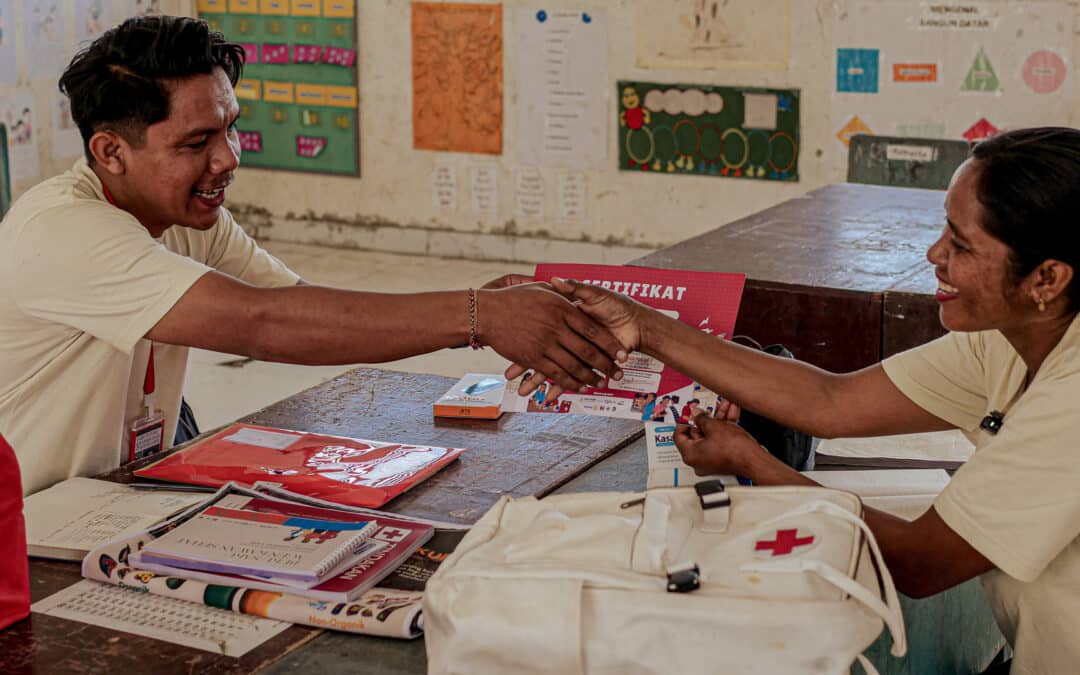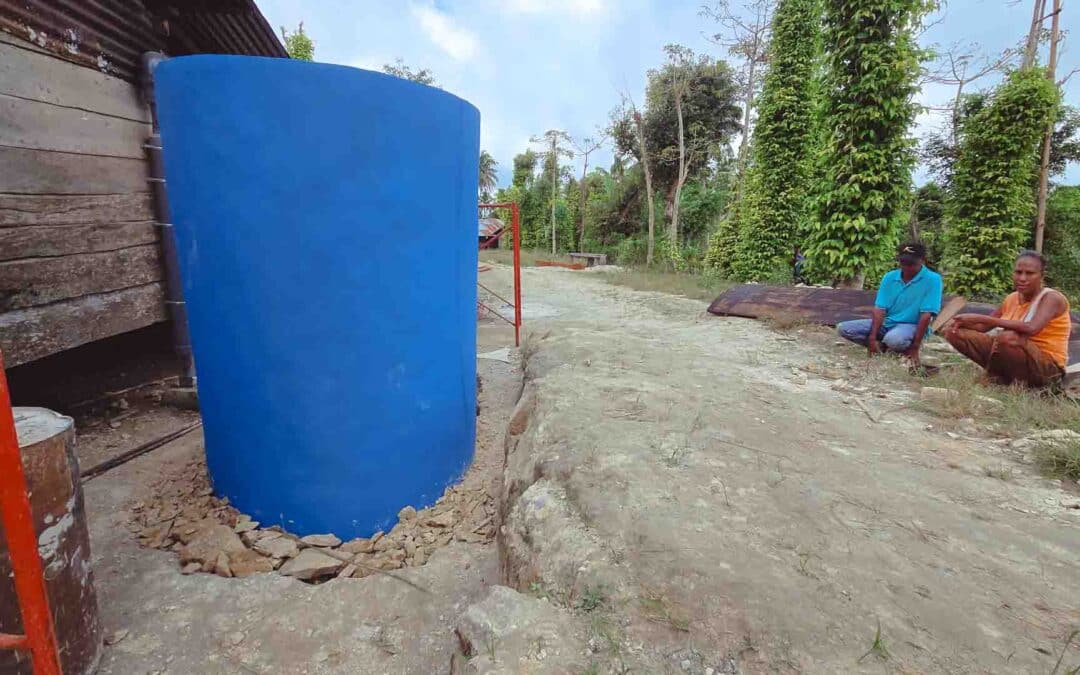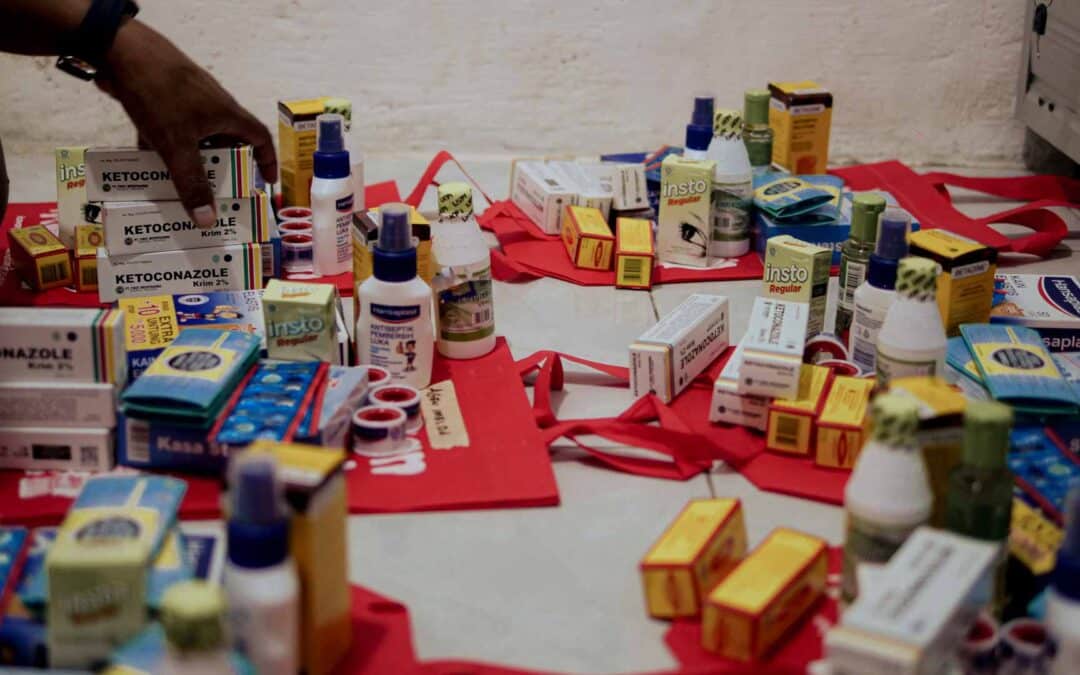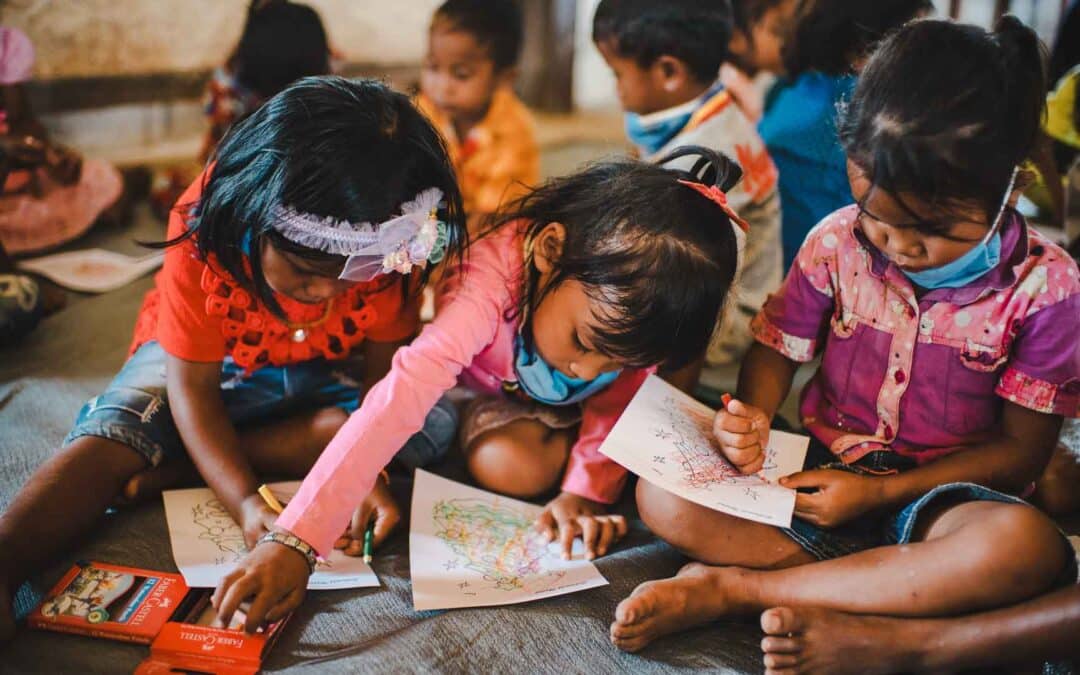In ultra-rural areas where clean water is scarce, ferrocement tanks are the ideal solution. These tanks, built by our teams, store rainwater safely and economically. They reduce the spread of malaria and dysentery, improve sanitation and strengthen general health. These tanks are a practical solution for 1,000 Swiss francs per tank for communities in need.
This image is in 1920×1080 resolution. Click on it to enlarge and view at full size.
Hygienic ferrocement tanks change the lives of families without direct access to clean water.
This New “Picture of the Day” shows the construction of ferrocement tanks in exceptionally remote locations. It shows two huge tanks under construction, each with a massive 10,000-litre capacity, twice the size of our usual tanks.
In areas where access to clean water is non-existent, our teams on the ground are building tanks using so-called ‘ferrocement’ technology. These tanks have been designed to store rainwater collected from local rooftops, once these rooftops have been checked and determined to be ‘fit for collection’. Our specially developed filtration systems ensure that before entering these 10,000 litre ferrocement containers, all collected rainwater undergoes a thorough cleaning process to ensure that the resulting stored water remains safe and clean.
The ferrocement construction process involves layering wire mesh with cement and sand mortar to create strong and durable structures of a thin nature. Due to its exceptional resilience and insensitivity to damage from external forces, this material is highly recommended for us to construct water tanks located in remote locations where resources are scarce and sustainable solutions are a priority.
These tanks offer a considerable advantage due to their hygienic structure that prevents the infiltration of air, light, heat or any form of impurities, including dirt and animal waste. Equipped with specially designed lids, these tanks are sealed against contaminants, thus ensuring clean and safe water storage.
The construction of these tanks is both cost-effective and relatively easy. A 10,000 litre ferrocement tank, as shown in the photo, would require approximately 1,000 Swiss francs to construct. Therefore, creating a reservoir that can hold up to 20,000 litres – enough for many families in a village or region to access Clean Water – would cost around 2,000 Swiss francs. East Sumba has no traditional means of obtaining clean drinking water; rainwater must, therefore, be used if survival is at a premium here.
The impact of these sanitised water reservoirs on extremely remote households is considerable. The availability of pure drinking water significantly reduces infectious diseases such as polio, malaria and dysentery. Better cleanliness and sanitation practices translate into better health conditions that reduce the burden of disease, helping families to focus more on improving food intake and living conditions. In a region where construction resources are scarce and facilities insufficient – their existence provides more than a solution – it represents a perspective in terms of water accessibility for the economies of these ultra-rural regions and villages in the future.
Fair Future Foundation medico-social camp in East Sumba – Rumah Kambera, Lambanapu – The 26th of Auguts 2024.


